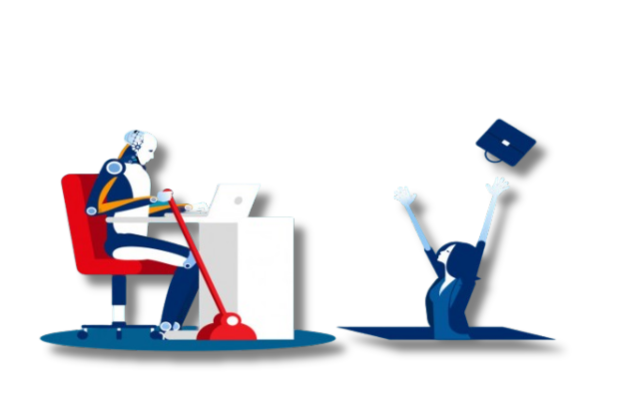Navigating the Evolving Landscape of AI in the Workforce
When exploring the intricate landscape of AI’s integration into the workforce, it’s essential to consider the nuanced interplay between automation and human labor. As AI technologies advance, they not only automate tasks but also reshape traditional job roles, challenging individuals and organizations to adapt to this evolving landscape.
AI’s Impact on Industries and Employment
At the heart of this transformation is the rise of AI, driven by advancements in machine learning and big data analytics. These technologies have already begun to impact various industries, from manufacturing to customer service, raising questions about job displacement and the future of work. While some argue that AI will create new job opportunities, others express concerns about widespread job loss.
Proactive Skill Development for the Future Workforce
In response to these changes, individuals and organizations must embrace a proactive approach to skill development and career planning. This includes upskilling and reskilling to prepare for the jobs of the future, which will require a combination of technical skills, such as data analysis and programming, and soft skills, such as problem-solving and emotional intelligence.
Seizing Opportunities in the Age of AI
Despite the challenges posed by AI integration, there are also opportunities for increased productivity, improved decision-making, and enhanced customer experiences. To capitalize on these opportunities, stakeholders must collaborate to establish ethical guidelines and regulations that ensure AI is used responsibly and ethically.
AI’s Influence on Work by replacing jobs
Navigating the uncertain terrain of AI replacing jobs requires a multifaceted approach that considers the broader societal implications of automation. By embracing lifelong learning and adaptation, individuals can build future-proof careers and thrive in an AI-dominated work environment.
Furthermore, the impact of AI on the workforce extends beyond job displacement, influencing the very nature of work itself. AI is not merely automating existing tasks but also reshaping traditional job roles. For example, in healthcare, AI is assisting doctors in diagnosing diseases and recommending treatments, shifting the role of healthcare professionals from diagnosticians to supervisors of AI-driven systems. Similarly, in the legal industry, AI is being used to review contracts and conduct legal research, changing the role of lawyers.
Thriving in the AI Era: Skills, Innovation, and Adaptation
Adapting to this changing landscape requires individuals to develop skills that are complementary to AI. These include creativity, empathy, and critical thinking—skills that are difficult to automate and are increasingly valued in the workplace. Organizations must also redesign jobs to leverage the strengths of both humans and machines, creating a symbiotic relationship that enhances productivity and innovation.
While the integration of AI presents challenges, it also offers opportunities for individuals and organizations to thrive in this new era. By embracing a growth mindset and a willingness to learn new skills, individuals can position themselves for success in an AI-dominated work environment. Organizations that invest in education and training programs and create a culture of lifelong learning will also be better equipped to adapt to the changing demands of the workforce.
Conclusion: Embracing Change
In conclusion, the rise of AI in the workplace is reshaping the way we work and challenging us to rethink traditional notions of employment. By understanding the impact of AI on job displacement, adapting to the changing nature of work, and developing skills that are complementary to AI, individuals and organizations can navigate this uncertain terrain and build a future-proof career in the era of automation.




